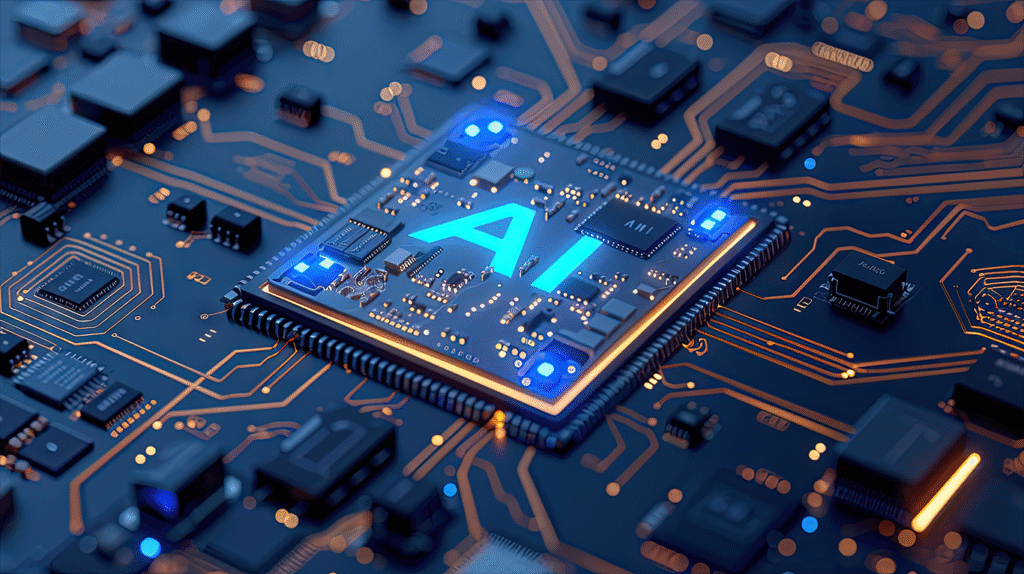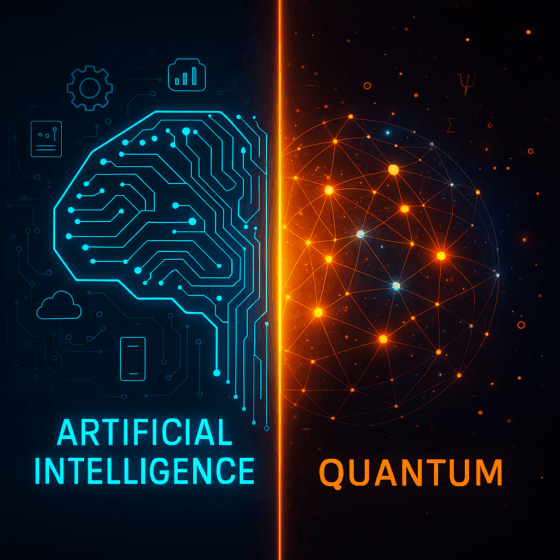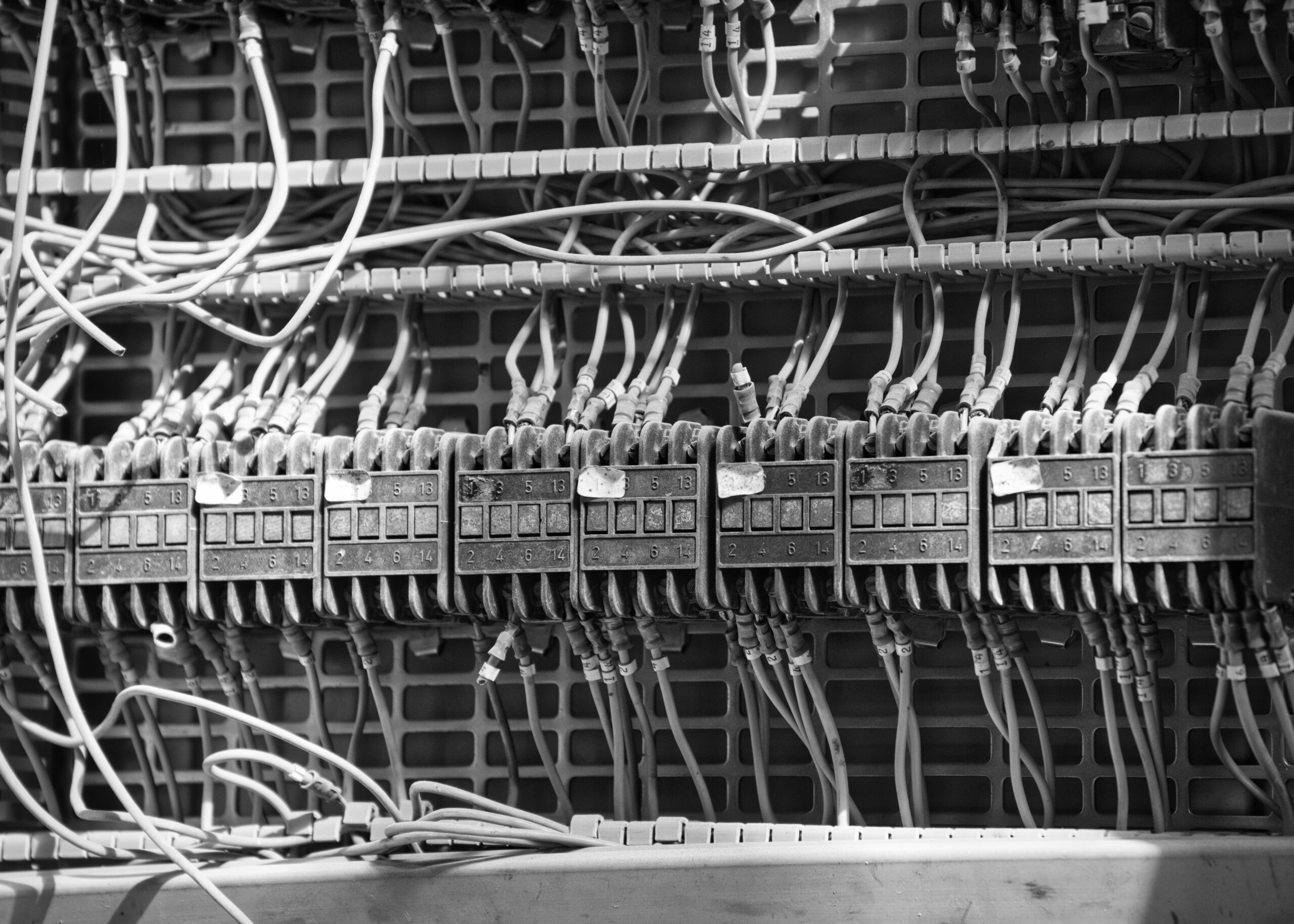As we stand at the intersection of two revolutionary technological frontiers, a compelling question emerges: will quantum computing or artificial intelligence have a more profound impact on society over the next decade? Both technologies promise to reshape industries, solve previously intractable problems, and fundamentally alter how we interact with the digital world. Yet their trajectories, challenges, and potential applications differ dramatically. This analysis examines the current state, near-term prospects, and transformative potential of both technologies to assess which will prove more influential by 2035.
The Current Landscape: Market Maturity and Investment
The financial metrics reveal a stark contrast in market maturity between these two technologies. The global AI market will soar from $189 billion in 2023 to $4.8 trillion by 2033, a 25-fold increase in just a decade, according to UN Trade and Development projections.
Alternative estimates suggest even more aggressive growth, with some analysts projecting the global artificial intelligence market size is projected to grow from $294.16 billion in 2025 to $1,771.62 billion by 2032, exhibiting a CAGR of 29.2%. In contrast, quantum computing operates on an entirely different scale.
Current quantum computing revenue of $650-750 million should exceed $1 billion in 2025 according to industry projections, while quantum computing funding has hit a record high – $1.5 billion so far in 2024. The quantum market represents roughly 0.2% of the AI market size, highlighting the vast disparity in commercial maturity. This investment gap reflects fundamentally different stages of technological development.
AI has reached commercial viability across numerous applications, from natural language processing to computer vision, while quantum computing remains largely in the research and early development phase for most practical applications.
Related: Why Now is the Time to Pay Attention to QaaS (Quantum as a Service)
Technological Readiness and Breakthrough Momentum
Recent developments suggest both fields are experiencing significant momentum, albeit at different scales of impact. Google’s latest quantum breakthrough demonstrates the field’s progress: Willow can reduce errors exponentially as we scale up using more qubits. This cracks a key challenge in quantum error correction that the field has pursued for almost 30 years.
This represents a fundamental advance in quantum error correction, one of the primary barriers to practical quantum computing. Meanwhile, in March 2024, Quantinuum announced a breakthrough in the ability to build a large-scale quantum computer. A month later, at the Quantum World Congress, IBM, Microsoft, and Boeing all announced major developments in their quantum research.
These developments signal that quantum computing is transitioning from purely academic research to serious industrial investment.However, AI’s momentum operates at an entirely different velocity. The technology continues to demonstrate rapid advancement across multiple domains simultaneously.
In January 2024, the top U.S. model outperformed the best Chinese model by 9.26 percent; by February 2025, this gap had narrowed to just 1.70 percent, illustrating the rapid pace of international competition and capability improvement. The key distinction lies in implementation timelines. AI breakthroughs translate to commercial applications within months, while quantum advances typically require years of additional development before practical deployment.

Application Scope and Industry Impact
AI’s transformative impact spans virtually every sector of the global economy. Software solutions led the market and accounted for 35.0% of the global revenue in 2024. This leading share can be attributed to prudent advances in information storage capacity, high computing power, and parallel processing capabilities to deliver high-end services.
From healthcare diagnostics to financial services, autonomous vehicles to content creation, AI applications have demonstrated immediate practical value. Quantum computing’s application portfolio, while potentially revolutionary, remains more narrowly focused on specific problem domains.
The most promising near-term applications include cryptography, optimization problems, drug discovery, and financial modeling. The financial industry is poised to become an early adopter of quantum computing, particularly for portfolio optimization and risk analysis applications that leverage quantum algorithms’ unique capabilities.
The breadth difference is crucial for assessing ten-year impact. AI affects consumer applications, enterprise software, industrial processes, and scientific research simultaneously. Quantum computing, while potentially superior for specific computational problems, will likely impact a smaller number of specialized applications within the next decade.
Infrastructure and Scalability Challenges
AI benefits from leveraging existing computational infrastructure, albeit with significant energy and hardware demands. The technology scales on conventional semiconductor architectures, cloud computing platforms, and established networking infrastructure. This allows for rapid deployment and iteration. Quantum computing faces fundamental infrastructure challenges. These platforms have introduced more powerful quantum processors, allowing businesses and researchers to experiment with QC without needing to build and maintain their own quantum hardware, but quantum systems require extreme operating conditions including near-absolute zero temperatures, electromagnetic shielding, and highly specialized control systems. The infrastructure barrier means quantum computing deployment will likely remain concentrated in specialized facilities and cloud-based services for the foreseeable future, limiting its direct integration into everyday business operations.

Skills, Talent, and Ecosystem Development
AI has cultivated a relatively broad talent pipeline with educational institutions worldwide offering relevant programs. While specialized AI expertise commands premium salaries, the field can draw from traditional computer science, mathematics, and engineering backgrounds.
The ecosystem includes numerous tools, frameworks, and platforms that lower barriers to entry. Quantum computing requires highly specialized expertise spanning quantum physics, advanced mathematics, and specialized engineering disciplines.
The talent pool remains extremely limited, with universities only recently beginning to develop comprehensive quantum computing curricula. This talent constraint will likely limit the speed of quantum computing deployment across industries.
Risk Factors and Technological Limitations
Both technologies face significant risks, though of different natures. AI confronts challenges around bias, safety, regulatory compliance, and societal impact. However, these are primarily governance and implementation challenges rather than fundamental technological barriers.
Quantum computing faces more fundamental technological hurdles. Quantum coherence, error correction, and scalability remain significant challenges despite recent progress. The technology also faces the quantum advantage threshold, the point where quantum computers demonstrably outperform classical computers for practical problems rather than specialized benchmarks.
The Next Decade: Convergence and Complementarity
Rather than viewing these technologies as competing alternatives, the next decade will likely witness their convergence. Quantum machine learning represents one promising intersection, where quantum computers could enhance AI training and inference for specific problem classes.
Quantum machine clusters for high-end computation, and quantum sensors that enhance intracellular sensing and mapping are just some of the predicted developments. AI will likely accelerate quantum computing development by optimizing quantum control systems, improving error correction algorithms, and assisting in quantum hardware design.
Meanwhile, quantum computing could eventually enhance AI capabilities in optimization, cryptography, and certain classes of machine learning problems.
AI’s Decade, Quantum’s Foundation
Based on current trajectories, market dynamics, and technological readiness, artificial intelligence will have a more profound and immediate impact on society over the next ten years. The scale of AI’s market growth, breadth of applications, and current commercial viability position it as the dominant transformative technology of the 2020s and early 2030s.
However, this assessment comes with important caveats. The next decade will likely prove crucial for quantum computing as a foundational period. The progress in error correction, hardware scalability, and algorithm development occurring now will determine quantum computing’s trajectory for the following decade. While AI will reshape society in the next ten years, quantum computing may be positioning itself to dominate the subsequent ten years.
The most accurate prediction may be that AI will shape the next decade while quantum computing shapes the decade after. AI’s immediate impact will transform industries, create new economic sectors, and alter social interactions. Simultaneously, quantum computing will mature from experimental technology to practical tool, setting the stage for revolutionary applications in the 2030s and beyond.
For policymakers and technologists, this suggests a dual strategy: investing in AI deployment and governance for immediate competitive advantage while simultaneously building quantum computing capabilities for long-term technological leadership. The nations and organizations that successfully navigate both technologies will be best positioned for sustained technological dominance across the next two decades.
The question isn’t ultimately which technology will win, but how their combined impact will reshape human society. AI will provide the immediate transformation, while quantum computing will enable the next phase of computational evolution. Both deserve significant attention and investment, albeit with different timelines and expectations for return on investment.







